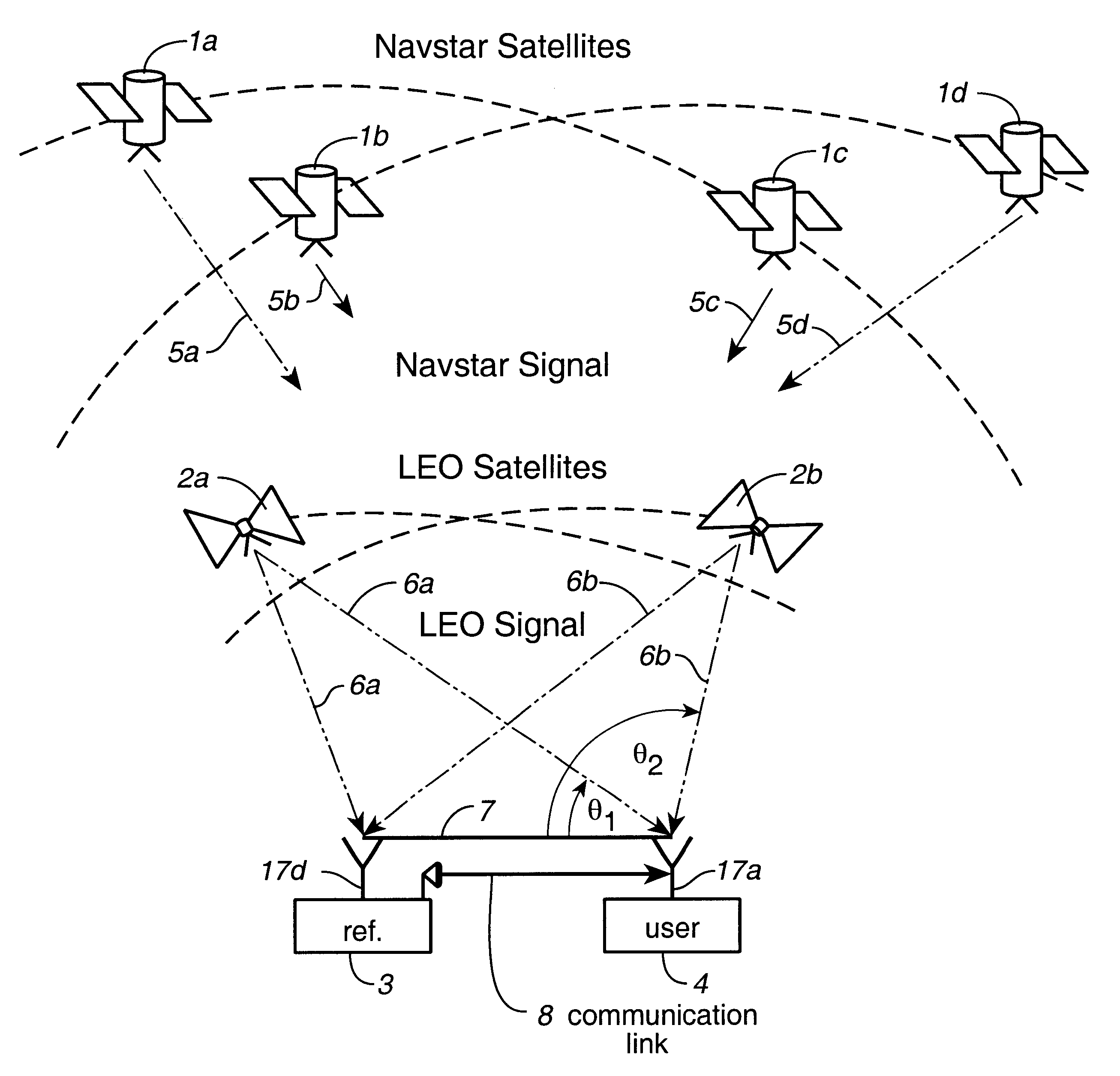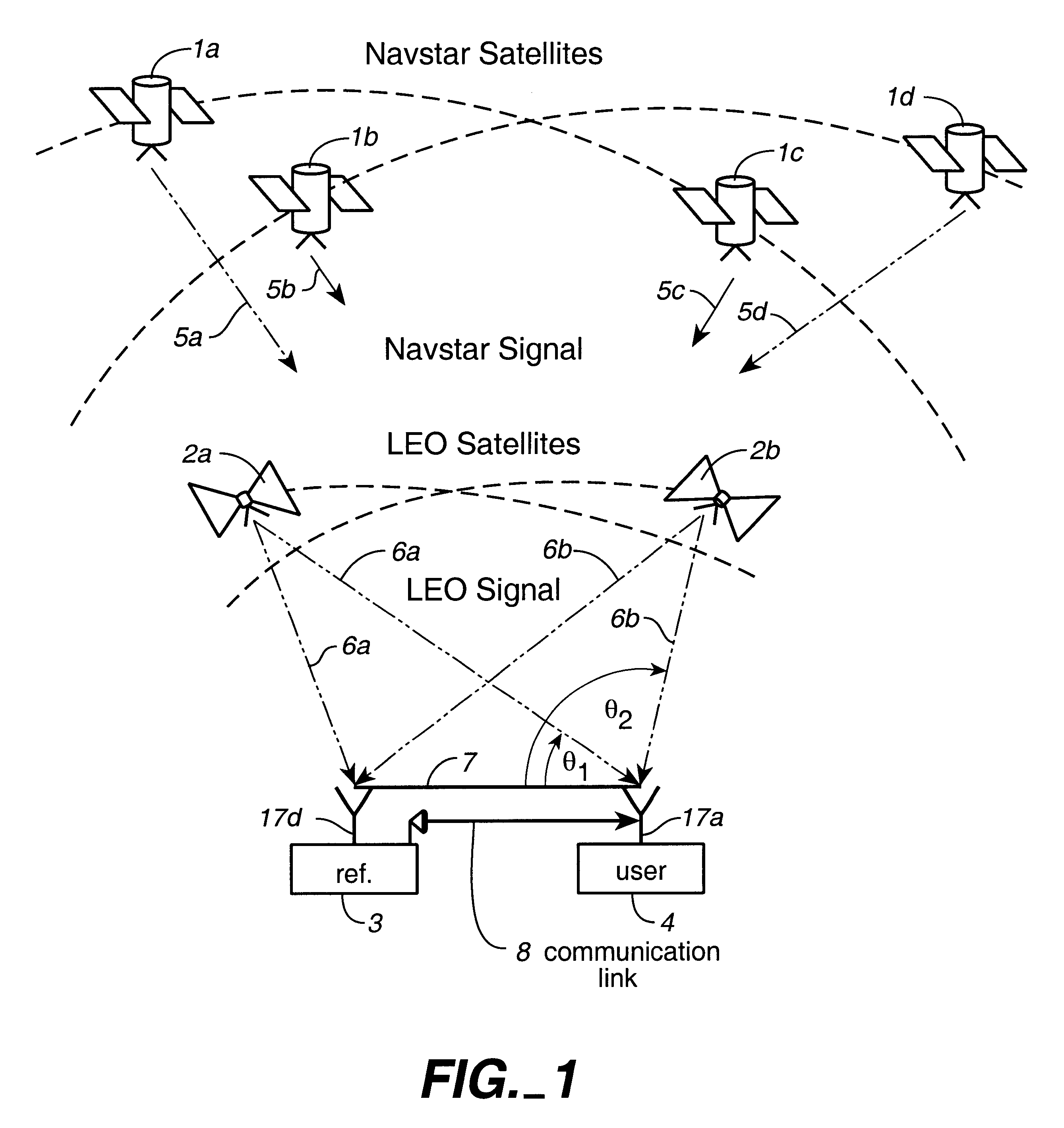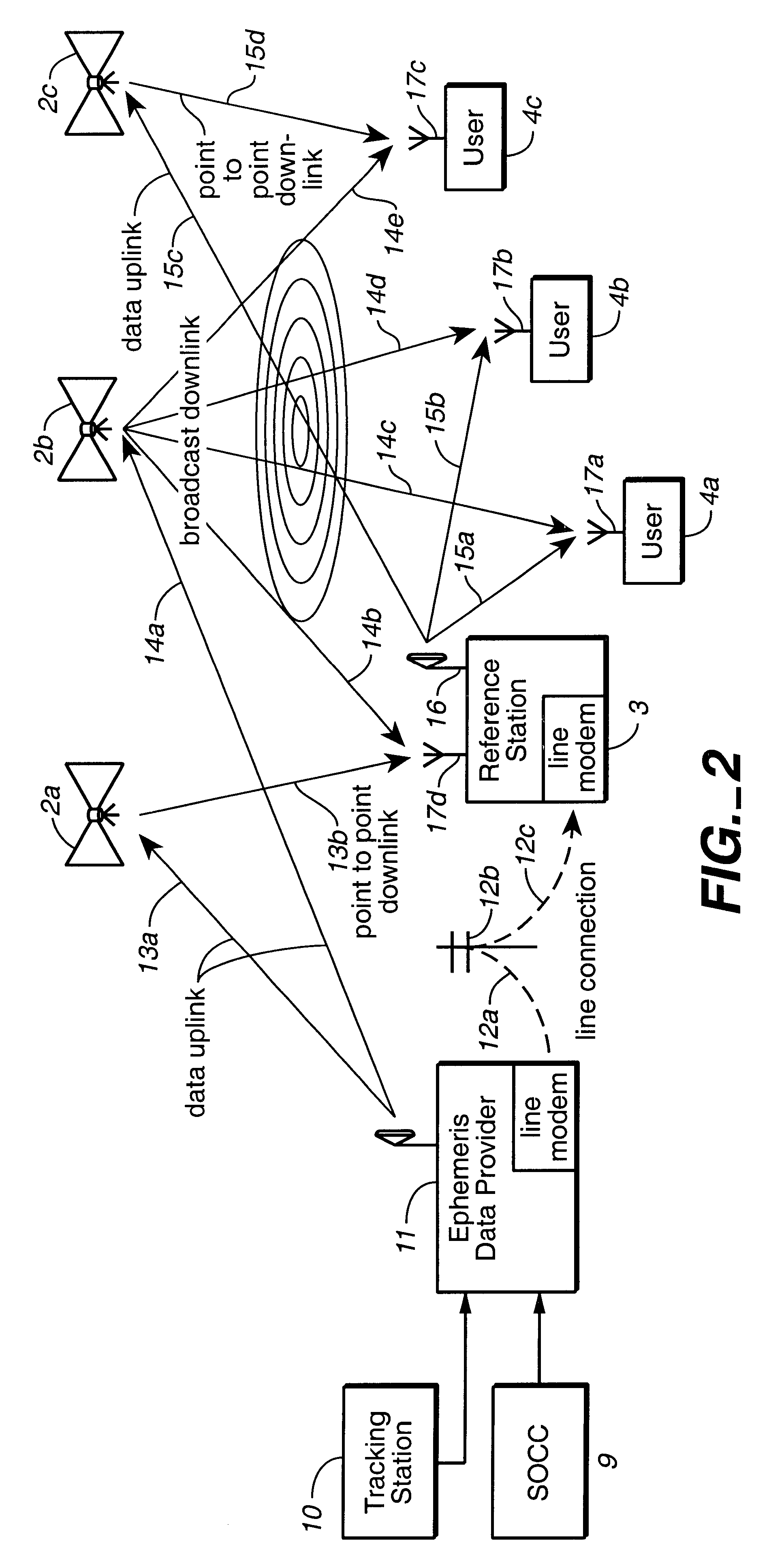System using leo satellites for centimeter-level navigation
a technology of satellite navigation and centimeter-level data, applied in the direction of instruments, navigation instruments, transmission, etc., can solve the problems of inability to determine by direct measurement how many complete integer cycles have elapsed between, and the difficulty of significant difficulty inherent in this techniqu
- Summary
- Abstract
- Description
- Claims
- Application Information
AI Technical Summary
Benefits of technology
Problems solved by technology
Method used
Image
Examples
example implementation
VIII. EXAMPLE IMPLEMENTATION OF THE INVENTION: AUGMENTING GPS WITH THE GLOBALSTAR TELECOMMUNICATIONS CONSTELLATION
VIII.A. The necessary criteria for cm-level positioning
In order for a LEO constellation to rapidly resolve cycle ambiguities with integrity for a mobile user, the following criteria should be fulfilled:
There should ideally be 2 or more LEO satellites available for tracking.
A carrier signal should be traceable for a time period of a few minutes.
The satellite ephemerides should be known to good accuracy.
The SNR ratios should be sufficient for accurate carrier phase estimation.
All of these criteria are fulfilled by the Globalstar Constellation. Carrier phase from one satellite can be tracked for several minutes at a time. In addition, the constellation has GPS sensors onboard so the ephemerides can be estimated to <20 m rms. FIG. 14 describes the percentage availability of the satellites at different latitudes. Note that there are always 2 satellites available above 10.sup....
PUM
 Login to View More
Login to View More Abstract
Description
Claims
Application Information
 Login to View More
Login to View More - R&D
- Intellectual Property
- Life Sciences
- Materials
- Tech Scout
- Unparalleled Data Quality
- Higher Quality Content
- 60% Fewer Hallucinations
Browse by: Latest US Patents, China's latest patents, Technical Efficacy Thesaurus, Application Domain, Technology Topic, Popular Technical Reports.
© 2025 PatSnap. All rights reserved.Legal|Privacy policy|Modern Slavery Act Transparency Statement|Sitemap|About US| Contact US: help@patsnap.com



